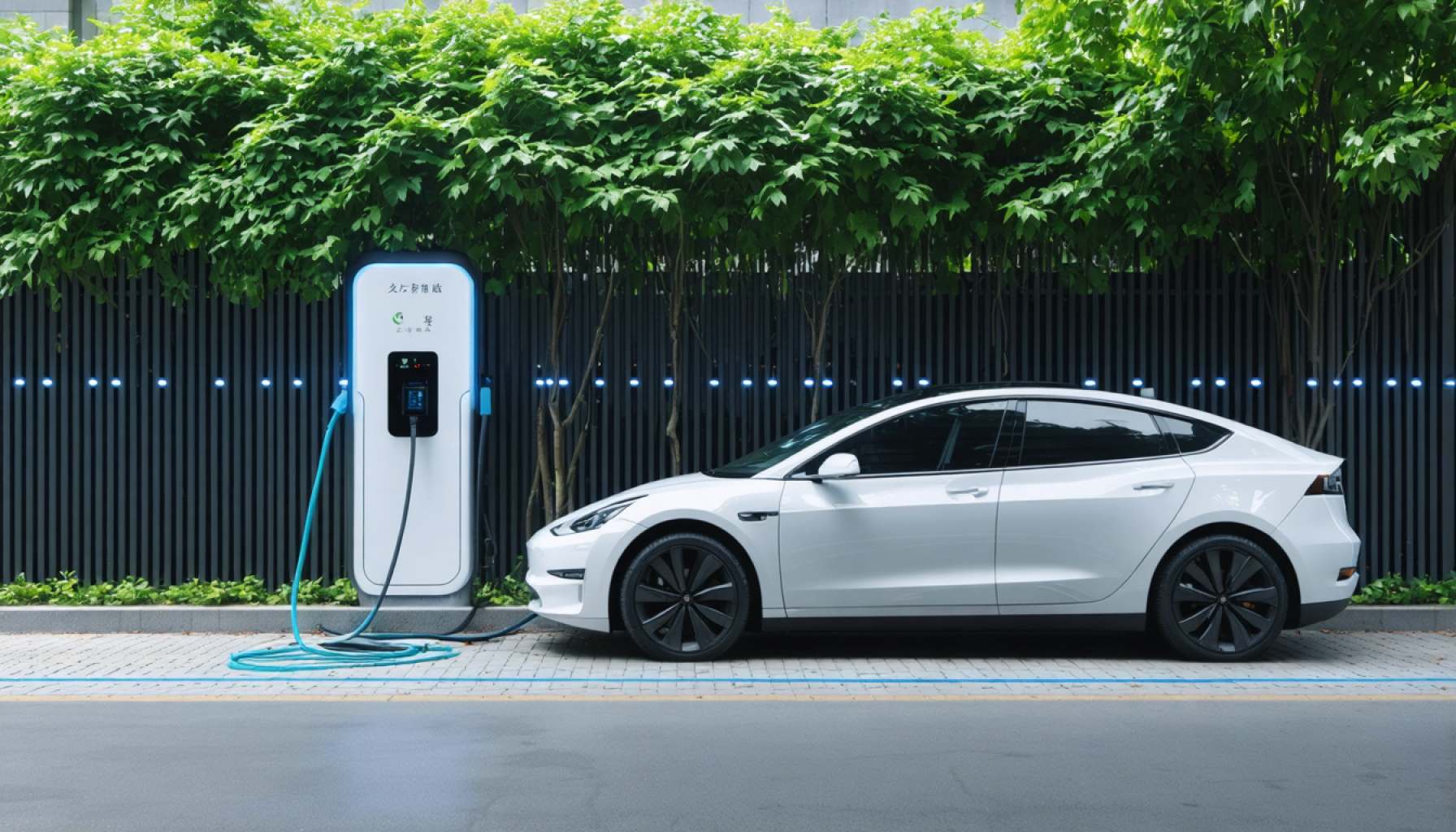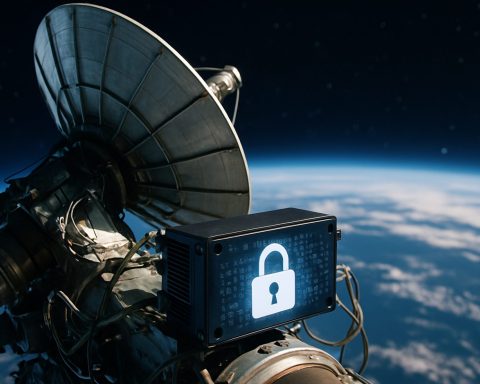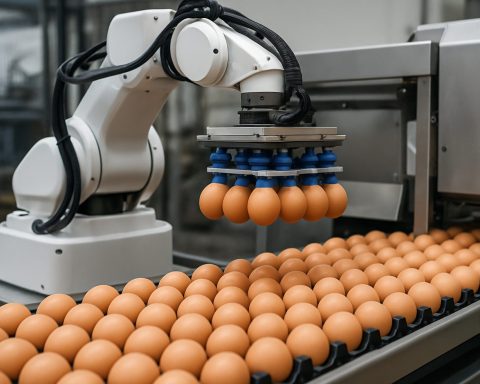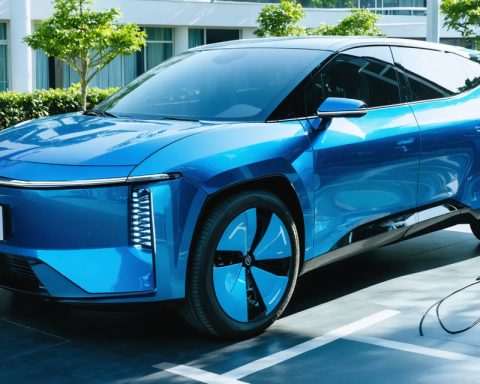- Sinopec and CATL are leading a transformative initiative to revolutionize EV charging in China through a vast network of battery swap stations.
- The ambitious plan aims to establish 500 swap stations by the end of this year, expanding to 10,000 by 2025, covering cities and highways nationwide.
- This innovative approach enables EVs to exchange depleted batteries for fully charged ones swiftly, akin to traditional refueling experiences.
- The collaboration emphasizes sustainability, featuring solar-powered microgrids and advanced battery systems to enhance renewable energy use.
- Sinopec’s vast infrastructure and CATL’s partnerships with major automakers ensure a seamless integration of battery-swappable vehicles into mainstream use.
- The initiative promises to standardize operations, address technological incompatibility, and drive the shift towards a sustainable future.
Amidst the concrete jungle of China’s rapidly evolving cities, a silent revolution stirs—a vision to transform how electric vehicles (EVs) charge, led by two titans of industry. Sinopec, a powerhouse in the energy sector, and CATL, a global leader in lithium-ion battery manufacturing, have unveiled an audacious plan to unfurl a sprawling tapestry of battery swap stations crisscrossing the nation. This isn’t just a tweak to infrastructure; it’s a paradigm shift.
Imagine this: pulling into a sleek station nestled in the city, not to refill your gas tank, but to watch as a machine seamlessly swaps out your EV’s spent battery for a fully charged one, in the blink of an eye. That’s the future Sinopec and CATL envision—a future where charging an EV is as instinctive and swift as traditional refueling.
This transformative venture aims to erect no fewer than 500 such stations this year, setting the groundwork for a colossal network of 10,000 by 2025. Through this ambition, the partnership seeks to envelop China’s cities and highways, ensuring that the green revolution touches every corner, from the bustling streets of Beijing to the serene landscapes of rural provinces.
Sinopec already commands an impressive empire with its 30,000 energy stations and some 28,000 Easy Joy convenience stores peppered across the landscape. In its arsenal, 10,000 ultra-fast charging stations stand ready, testament to its prowess in bringing the future to the present. Meanwhile, CATL’s strategic alliances with prominent automakers underscore its commitment to innovation. As a partner to giants like Nio and Hongqi, and commercial stalwarts Sinotruk and Foton, CATL is poised to lead a fleet of batter-swappable vehicles into the mainstream.
Simultaneously, this partnership is not merely about convenience. It’s geared towards sustainability, knitting a tapestry of solar-powered microgrids, advanced energy storage, and intelligent battery systems. Each piece of this intricate puzzle interlocks to redefine energy consumption, reduce carbon footprints, and champion the era of renewable energy.
The implications stretch beyond just a simple charge. This network promises to standardize operations across the EV landscape, obliterating the current chaos of incompatible technologies. With each station, Sinopec and CATL lay down a promise—not just to push the boundaries of what’s possible, but to streamline how we interact with our vehicles and our planet.
As the silent hum of electric motors grows louder on China’s streets, this partnership stands as a beacon of innovation. Together, Sinopec and CATL are not merely building stations; they’re constructing a new frontier of mobility, where convenience meets consciousness, and where the journey towards sustainability gains an unstoppable momentum. The wheels of change are in motion, and with every battery swapped, a cleaner, greener future draws nearer.
Will Battery Swap Stations Revolutionize the EV Charging Landscape? Unveiling Insights and Predictions!
Understanding the Sinopec and CATL Battery Swap Initiative
China’s rapidly urbanizing landscape sets the stage for a significant shift in the electric vehicle (EV) charging paradigm. At the heart of this transformation is a joint initiative by Sinopec, a leading energy conglomerate, and CATL, a global powerhouse in lithium-ion battery manufacturing. Together, they are spearheading the development of a vast network of battery swap stations, aiming for 500 installations by the end of this year and a staggering 10,000 by 2025. This endeavor not only exemplifies a leap in technology but also signifies a strategic move towards sustainability.
How Battery Swap Stations Work
Let’s explore the process of battery swapping, which offers a rapid alternative to conventional EV charging:
1. Driver Arrival: The driver pulls into the battery swap station.
2. Automated Process: A mechanized system removes the depleted battery from the EV.
3. Battery Installation: A fully charged battery, provided by the station, replaces the spent one.
4. Quick Checkout: The entire swap is completed in minutes, allowing for swift vehicle turnover.
This process highlights the potential for significant reductions in wait times and increases in productivity for EV drivers.
Benefits of the Battery Swap Model
1. Speed and Convenience
Battery swaps can be completed in under five minutes, offering a solution akin to traditional refueling—key for busy urban centers.
2. Reduced Downtime
Commercial fleets stand to gain tremendously, minimizing time lost to charging and thus improving operational efficiency.
3. Standardization
With Sinopec and CATL’s expansive network, the initiative could lead to a standardization of battery technology within China, reducing interoperability issues seen in traditional charging setups.
Market Impact and Trends
The battery swap initiative is poised to impact several domains within the EV industry:
– EV Adoption Rates: The promise of convenient charging is likely to boost consumer confidence and accelerate EV adoption.
– Commercial Applications: Industries relying on logistics and transportation can benefit from reduced vehicle idle times.
– International Expansion: Successful implementation in China could spark similar ventures globally, especially in densely populated or developing regions.
Real-World Use Cases
– Ride-Sharing Services: Companies like Didi Chuxing could leverage swapping stations to ensure fleet vehicles remain consistently operational.
– Municipal Services: City services, including buses and taxis, can reduce their environmental impact and operational costs through battery swapping.
Criticisms and Limitations
The implementation of battery swap stations faces several challenges:
– Initial Costs: Establishing these stations requires significant upfront investment.
– Infrastructure Coordination: Efficient deployment necessitates integration with city planning and existing infrastructures.
– Battery Compatibility: Ensuring compatibility across different vehicle models and brands remains a critical hurdle.
What’s Next for Battery Swapping?
As the network expands, these stations could eventually serve as critical nodes within a smart grid, helping to balance energy loads and incorporate renewable energy sources. With Sinopec and CATL leading the charge, these stations could transform EV charging into a fast, reliable, and eco-friendly process.
Expert Insights
According to energy experts, the shift towards battery swapping is revolutionary in cutting down emissions and lowering EV adoption barriers. However, success hinges on technology standardization and addressing logistic challenges.
Actionable Recommendations
– EV Buyers: Look for vehicles compatible with battery swap stations to enjoy maximum convenience and reduced charging times.
– Business Owners: Consider partnerships with battery swap networks to enhance fleet efficiency.
– Urban Planners: Integrate battery swap stations into future urban development plans to support sustainable transportation goals.
For more on the latest in energy and technology, be sure to check Sinopec and CATL websites.
By staying informed and leveraging available resources, individuals and businesses can become proactive participants in this evolving landscape, making strides towards a cleaner and more sustainable future.










